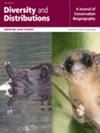Modelling Non-Indigenous Ascidian Larval Dispersal in the Coastal Waters of the Eastern Mediterranean Sea
Abstract
Aim
Invasive ascidians pose significant economic and ecological threats in coastal waters, establishing large aggregations that alter benthic community structures, damage aquaculture facilities, and increase biofouling. While numerous studies have investigated the physiology and ecology of adult introduced ascidians, only a few have focused on their larval stage, which plays a key role in species dispersal and genetic diversity. We present larval dispersal simulations for four solitary non-indigenous ascidian species to assess their ability to establish sustainable communities along the Eastern Mediterranean coast, considering current conditions and global warming scenarios.
Location
Eastern Mediterranean.
Methods
Data were gathered on the early life stages of Styela plicata, Herdmania momus, Microcosmus exasperatus and Phallusia nigra. This included depth range, reproduction season, current distribution, and larval viability. Using this comprehensive dataset, we developed a spatiotemporal larval dispersal model, incorporating species biogeography and reproductive traits.
Results
Our model highlights the ability of solitary ascidians to rapidly expand along the Eastern Mediterranean coastline under favourable conditions. Within one generation, reproduction products of newly established populations can disperse up to 100 km. Global warming may extend the reproduction season for tropical species like M. exasperatus by 50%, intensifying propagule pressure. For S. plicata, increased water temperature is expected to reduce its reproduction period by 33%. Furthermore, analysis of S. plicata dispersal potential revealed a lower rate of progress due to its current restricted distribution to artificial structures.
Main Conclusions
The application of high-resolution biological and physical information offers an effective scientific approach to guide policymakers. We emphasise the risk of coastal development accelerating the establishment of non-indigenous ascidians by providing favourable conditions and increasing propagule pressure on the natural substrate. This risk should be taken into consideration in view of the rapid development and implementation of coastal artificial structures, and supports the promotion of Marine Protective Areas.


 求助内容:
求助内容: 应助结果提醒方式:
应助结果提醒方式:


